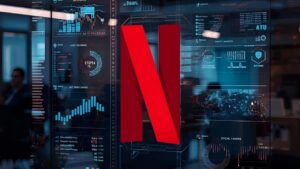People who know about OpenAI’s early plans say the company is looking into a way to go public that could give it a value of up to $1 trillion.
The schedule being talked about would allow for a filing as early as the second half of 2026. Advisers are considering a raise that starts at $60 billion and could go higher.
The business hasn’t filed any paperwork yet, and the numbers could change depending on how the market and the business are doing.
A spokesperson for OpenAI told Reuters that the company hasn’t set a date yet and is focused on building a long lasting business.
The talks come less than a month after OpenAI’s private valuation jumped to $500 billion after a secondary share sale that let current and former employees cash out about $6.6 billion.
Reuters says that Thrive Capital, SoftBank, Dragoneer, Abu Dhabi’s MGX, and T. Rowe Price were all investors in that deal.
The jump from the previously reported $300 billion mark has made OpenAI the center of late stage private capital and raised hopes for a future listing.
The Information said that OpenAI made about $4.3 billion in the first half of 2025. Reuters said that the company is on track to make about $20 billion a year by the end of the year.
The company is still losing money because it is spending a lot of money on computing power and product development. This is a common situation for tech companies that are growing quickly and putting scale ahead of profit.
Internally, the move toward the public markets comes after a complicated restructuring that gave the nonprofit OpenAI Foundation a big minority stake and performance based warrants.
The changes also made the company less dependent on its strategic partner Microsoft, but Microsoft is still a major shareholder.
According to Reuters, Microsoft owns about 27% after putting in about $13 billion. If OpenAI goes public, it will be able to reach more investors, use a public currency to buy things, and get new money to build data centers and do long term AI research.
If OpenAI goes through with it, it will test how much investors want the next step in the AI trade after a lot of money has been raised in the sector.
The public’s reaction to any AI float will depend on how well they can see the margins, the unit economics for training and inference models, and how long consumer and business demand will last.
Analysts will look for information on the cost per token, the trends in gross margin for cloud based AI services, and the mix of subscription revenue and usage based API sales.
A trillion dollar goal would also make people think of big, mature companies that already make a lot of free cash flow. This would raise questions about how to value AI platforms that are still figuring out how to make money.
OpenAI’s hybrid structure tries to make safety oversight and business execution work together, which might make some investors feel better and confuse others.
The S-1 will need to make clear who makes the final decisions about strategy, how conflicts are settled, and what responsibilities, if any, the for profit company has to the nonprofit foundation.
Those details are important for deciding who can be on the index, what the stewardship policies are, and what the final shape of the shareholder base will be.


















